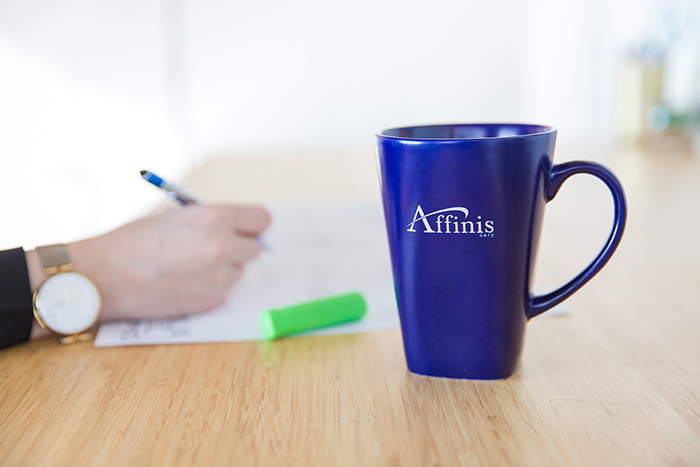A Look at Professional Land Surveyors
Posted on Wednesday, March 18th, 2020 by Affinis CorpIn Survey, tagged in

Founded by the National Society of Professional Surveyors (NSPS), National Surveyors Week is an annual, week-long celebration of the surveying profession. It was designed to raise awareness and encourage others to consider this career path. In recognition, we asked our professional surveyors to share their favorite projects and the new technology and trends they’re excited to use. Find those answers, as well as others, below.
What is your favorite project you’ve worked on at Affinis?
Robert Ubben, PLS: My favorite project is the Riverside Quindaro Bend L-385 Levee Project. It is one I have worked on with the same team members for 20 years now. I have conducted almost every type of survey a person can do on that project alone.
Aubrey Meyer, PLS: I have worked on a lot of great projects over the years. If I had to pick one, I would say K-68 (US-169 to US-69). This project involved just about every aspect of surveying that I have done over the years in one large project. A GLO Section breakdown, property boundaries, right-of-way retracement, traditional “boots-on-the-ground” topographic survey merged with larger mapping by photogrammetry, bridge surveys, and a lot of coordination of individual efforts to complete the project.
What is the most interesting thing you’ve learned while out on a job?
Robert: I find it interesting that in different geographical areas of the state there are acronyms and slight variations of how work is completed that is very unique to those areas. Surveying is not a “one size fits all” for surveyors across a large area. An example is while working in southern Missouri, I kept finding recorded surveys that called for Boat Spikes set at some locations. I had never heard the term and couldn’t wait to find one in the ground, so I would know what they were. What southern Missouri surveyors call a Boat Spike is what we call a 100D nail in our local work area.
Aubrey: Over the years, survey methods have changed. Measuring long distances with a high level of accuracy is now just a matter of pushing a button, and the GPS provides the solution. Although older survey methods used to establish and monument boundaries resulted in work performed with a lesser degree of accuracy, this does not mean the work is inaccurate. Surveyors of today have to evaluate the established boundary lines and monuments using today’s measurements, while understanding the monuments were placed at the intended location and were done so using the best practices at that time.
Which new trends or technology are you excited to integrate in future designs?
Robert: I am excited Affinis is starting to capture and use data with point cloud or LiDAR techniques. It is challenging and fun to add a new method of data collection and see people excited about learning new workflows. Getting to see our certified drone pilots fly our equipment, capture data, and process it is also exciting.
Aubrey: I am excited to see how the remote sensing and Small Unmanned Aerial Systems (sUAS) technology is being implemented. As a land surveyor and map maker by trade, LiDAR technology being deployed on aerial systems is probably one of the largest advances in our industry in the past 20 years. The cost of the systems is coming down and making the technology available at a price that is relatively affordable.
What would you tell someone who is interested in becoming a surveyor?
Robert: I’d say it is a terrific career, and there will always be work in land surveying. It is the second oldest profession on the planet, and there will always be a need for surveyors to establish land boundaries. Every project site is different, so you are never stuck seeing the same scenery every day.
Aubrey: Surveying is a great career that will provide a lot of variety in the type of work you perform. There is always new technology to learn, and it offers plenty of challenges.